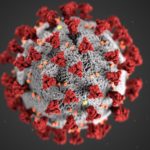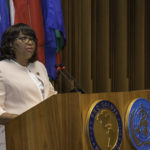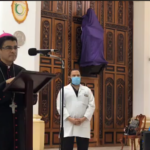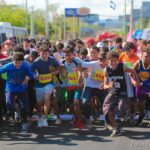If you fight your chaos
with peace,
non-violence,
brotherly love,
long marches without guns
with women and children
being spat on the face
be careful,
they will kill you.Claribel Alegria, 1973
On a Sunday evening in 1978, my mother and I went to mass at the Calvary church in my home town of Jinotepe. We never went to Calvary, as my mom usually preferred St. Anthony’s, which was closer to our house. I, on the other hand, was more partial to the Parroquia, because the benches were more comfortable. In spite of our preferences, we ended up at Calvary for the 5 pm mass.
Mom parked our car a few blocks away, by the Barberena General Store. I remember getting some corn on the cob before walking the four blocks from the Barberena’s to Calvary. I remember my mom telling me that I could have it after the services, so I left it in the car.
Memory is a queer thing. I don’t know why I remember the corn on the cob.
Father Anitua was officiating mass that day. He was a Spaniard and very well liked. We may have been about half way through services when shootout started outside. Everyone turned to look out the main door. Father Anitua compelled us to stop. “You should be more respectful. We’re in the middle of mass”, he said. He continued as though nothing was happening, and everyone just turned to him. My mom, when she tells the story, always mentions that Fr. Anitua looked ashen, but kept on going. “He was a very brave man, and he kept us calm,” my mom would say.
I don’t remember that. I remember trying to ignore the intermittent pop, pop, pop sound of gun fire coming from outside, and I remember thinking about corn on the cob. Would I be able to eat it? When mass ended, we just stayed inside the church until the shooting stopped. We walked back to our car. A single bullet hole had pierced our trunk. The corn on the cob was still there.
I ate it later.
I had not given much thought to this distant memory until a few days ago. On April 21, 2018, dozens of people from my hometown took refuge in the Parroquia Santiago, the Church of St. James the Elder, in downtown Jinotepe. These individuals were protesting against the government led by Daniel Ortega and his wife, Vice-president Rosario Murillo. The Ortega-Murillo regime had announced increases in payroll deductions and employer contributions to Nicaragua’s social security fund, which is managed by the Instituto Nicaraguense de Seguridad Social (INSS). The regime also announced a 5% tax on existing pensions to cover medical care.
They called it a “reform.” They said we needed it to save INSS from the imminent bankruptcy, predicted by the International Monetary Fund (IMF). The IMF indicates the INSS will be insolvent by 2019 (“Three”, 2017). The reforms were a necessary tightening of the belt in order to curtail the budgetary deficit that reached $76 million in 2017.
But the people were not having it. Ortega, who returned to power in 2007, has systematically undermined the already weak democracy the country barely began to build in 1990. By now, Ortega “has imposed an institutional dictatorship, a State-Party-Family regime that concentrates all the powers of the State, including the Army and the Police, and promises a social order, combining economic stability with selective repression and co-opting” (Chamorro, 2018). The INSS announcement was merely a spark that unleashed all the pent up frustrations of the past ten years.
Nicaraguan college students took to the streets in droves and thus began a series of protests that have brought out the best and the worse in us. We have seen heinous acts of police brutality, looting, and violence, but we have also witness acts of courage, solidarity, and selflessness. On April 21, even my otherwise sleepy home town erupted. That night, during a peaceful protest, Ortega sympathizers shot at the crowd gathered in front of the Parroquia. It was hearing the gun shots on a video shared via Facebook that brought back the memories on that distant day in 1978. It also made me realize that even though I remember hearing the shots and being at the church, I never looked into what actually happened.
I remembered gunshots, a mass, and then a massive funeral procession that went all over town, but I never knew who died then. All I knew is that they were Sandinista guerrilla fighters who were gunned down by Somoza’s National Guard. But who were they?
Their names were Fanor Chevez, Santiago Lopez, Mario Jose Alvarez, and Marlon Arevalo. The youngest, Fanor Chevez, was barely 14. The oldest, Santiago Lopez, was only 25. They died during the Student Massacre of June 9, 1978. According to eye witness accounts, all four fell to sniper fire. The bullet that killed seventeen-year old Marlon Arevalo destroyed his cranium splattering his brains onto a wall (Baltodano, nd, “paro estudiantil”).
Forty years later, protesters sought refuge inside our main church, and the Parroquia turned into sanctuary and improvised hospital for the wounded. For two days, the Parroquia fulfilled that role. On the evening of April 24, crowds gathered again, this time in mourning.
We mourn the 30 or so young people who have died since the protests began on April 18. We mourn those who were imprisoned and tortured. We mourn our betrayed ideals and that revolution for which so many fought and died, and that has been reduced to dust by the Ortega-Murillo regime.

Candlelight vigil. Jinotepe. April 24, 2018 The names of the dead are chalked onto the pavement in front of the Parroquia Santiago.



